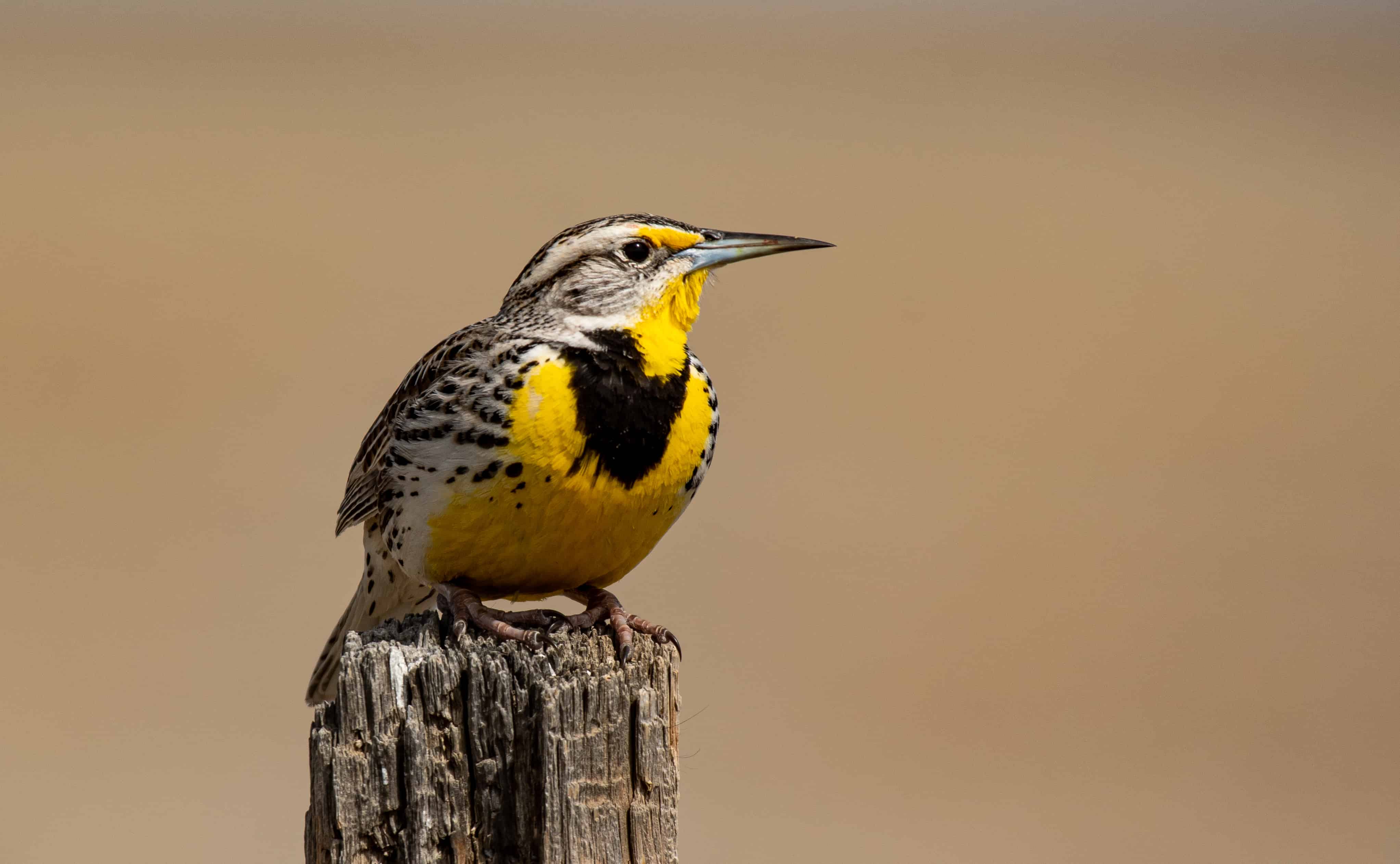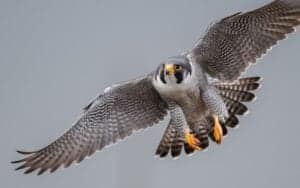Before being colonized by Europeans, Oregon was home to more than 50 tribes that hunted, foraged, and fished along the Columbia and Willamette Rivers. Today, nine federally recognized tribes remain. The state has a beautifully diverse geographical layout that includes volcanoes, high deserts, and temperate rainforests. These natural landscapes are home to a wide array of wildlife, including two avian species that hold the status of official state bird of Oregon: the Western Meadowlark and the Osprey.
Official State Bird of Oregon, the Western Meadowlark
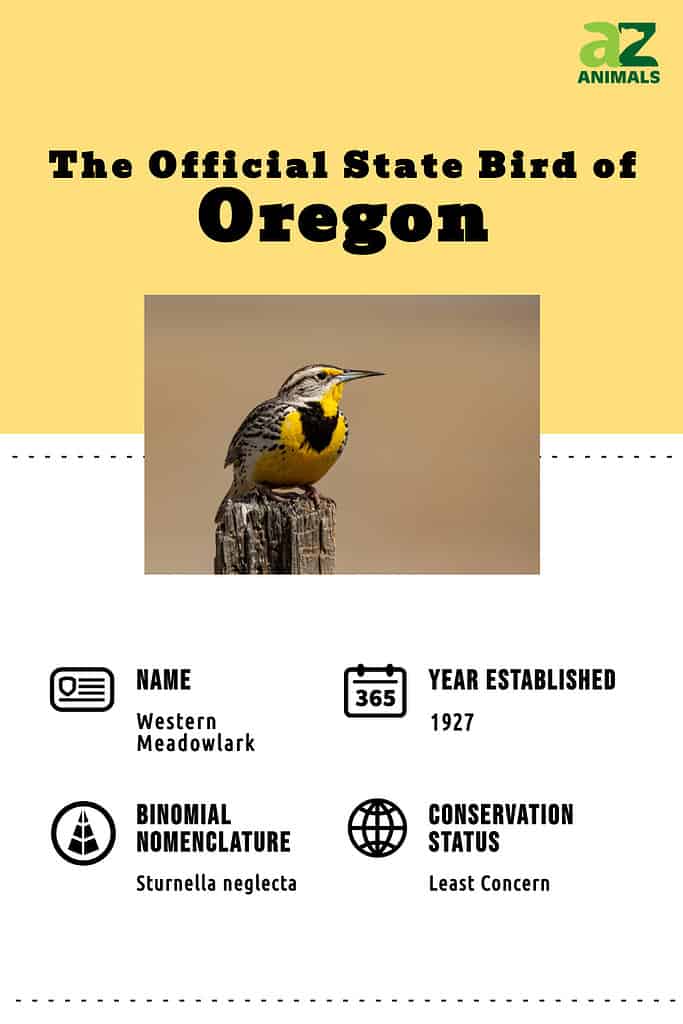
First, the official Oregon state bird is the western meadowlark. The bird received this status in 1927 after being chosen by schoolchildren around the state. Over 80,000 children were polled by the Audubon Society, and according to their website, over half voted for the western meadowlark. The results were officially proclaimed by former governor I.L. Patterson later in the same year.
The western meadowlark is quite a popular symbol within the United States, with Kansas, Nebraska, Wyoming, North Dakota, and Montana also selecting it as their official state bird.
Though the governor named the western meadowlark the state bird of Oregon by the governor, the proclamation was not official. The Oregon legislature would not officially designate the bird until 2017. In that year, the regular session debated whether the western meadowlark should remain the official state bird of Oregon or be replaced by the osprey.
In the end, the Oregon legislature officially designated the western meadowlark as the state songbird and the osprey as the state raptor. Keep reading to learn more about the official state birds of Oregon.
Western Meadowlark Identification
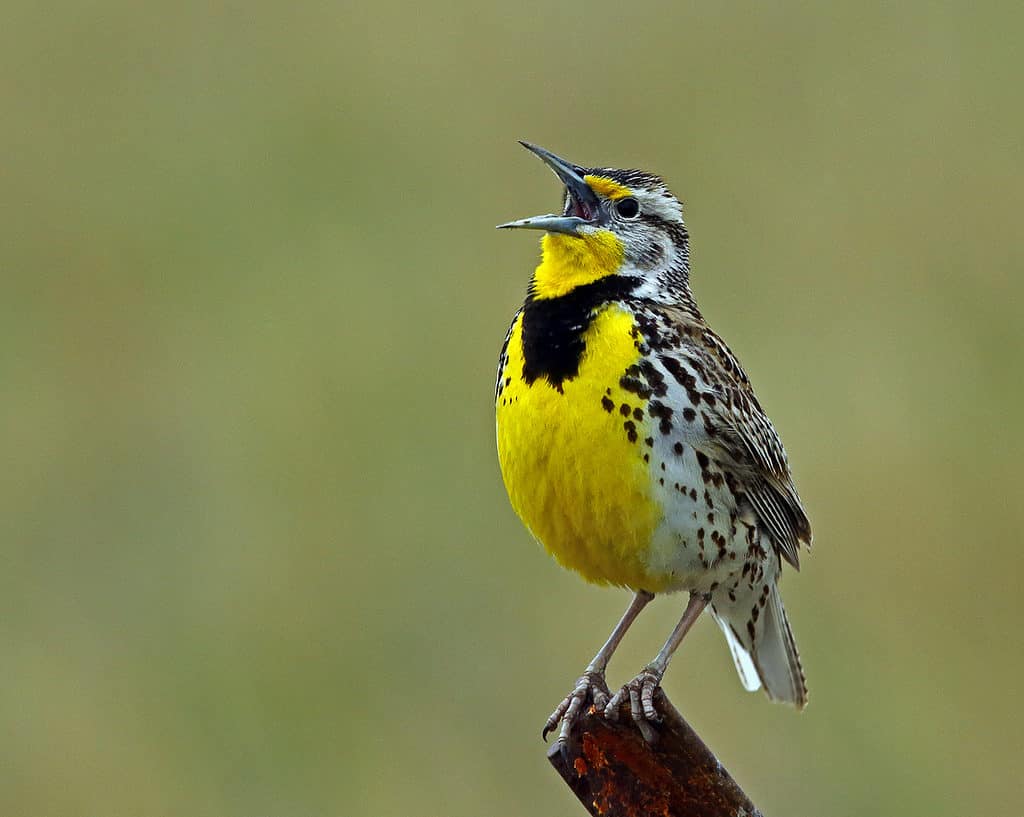
The western meadowlark is the official state bird of Oregon.
©iStock.com/photographybyJHWilliams
The scientific classification for the western meadowlark is as follows:
- Kingdom: Animalia
- Phylum: Chordata
- Class: Aves
- Order: Passeriformes
- Family: Icteridae
- Genus: Sturnella
- Scientific Name: Sturnella neglecta
The scientific name comes from the Latin word neglectus, meaning overlooked or ignored. This name was chosen because the western and eastern meadowlarks were not considered distinct species until 1805, with colonizers lumping them together. John James Audubon chose Sturnella neglecta in 1844.
The western and eastern meadowlarks have strikingly similar colors and patterns, but they differ in their song and call notes. Plus, the meadowlarks might have “lark” in the name, but they are not true larks. Instead, they are part of the New World blackbird family, Icteridae. In Spanish, the western species is called Pradero Occidental.
The western meadowlark is easily recognizable, with breeding adults sporting bright yellow breast feathers crossed by a “V” of black feathers. Immature adults will have pale yellow breast feathers crossed by a faint “V” of brown feathers. All adults, whether breeding or immature, are speckled with light and dark browns and white. They also have rounded tails, plump bodies, and a long, slender bill.
Western meadowlarks fly using short rapid wing beats to propel them quickly toward their destinations. They will also glide smoothly on the wind to push them forward.
What Do Western Meadowlarks Eat?
Western meadowlarks feed on a variety of foods in their habitats. While they mainly subsist on a diet of insects, they also eat grain and weed seeds. The birds have seasonal dietary habits. During the winter and early spring, they will consume a mixture of grains and insects. In late spring and summer, western meadowlarks mainly feast on ants, beetles, crickets, cutworms, and grasshoppers. In the fall, weed seeds join the ranks of their diet.
The western meadowlark uses a technique called “gaping” to catch their meals. They walk along the ground, dig their beak into the soil, and pry open the dirt to reach deeply buried seeds and bugs unavailable to other birds.
When winters are particularly difficult, western meadowlarks have been known to eat the eggs of other grassland bird species. They will occasionally eat carcasses hit by vehicles or killed by other animals. In some cases, the meadowlarks will hunt and consume other birds.
Known for Their Songs

The western meadowlark is notable for its distinct song.
©iStock.com/Gary Gray
The western meadowlark is known for its distinct song and call notes. The inseminating bird uses a distinct 7-to-10-note melody to attract mates, after months of establishing and defending a territory. When finding a mate, the bird will puff out its chest feathers, spread its tail feathers, and flick its wings. Inseminating birds will usually mate with two birthing birds during the same season, making them non-monogamous.
The inseminating bird will do the majority of the hunting and foraging for both of its mates. It will also defend the territory from other grassland birds, predators, and other nuisances.
The birthing bird takes anywhere from six to eight days to build a ground nest out of plucked grass stems woven into the surrounding dense grass cover. This creates a waterproof dome for the eggs.
Each season, each western meadowlark lays about five to six eggs. The eggs are white and heavily spotted with brown, rust, and lavender. The birthing bird will incubate the eggs for anywhere between 13 and 16 days. Hatchlings have pinkish-orange skin and patchy pearl gray down along their spines and above their eyes.
After 12 days in the nest, young birds leave before they can fly. The parents will care for these young for at least two additional weeks. The western meadowlarks are especially sensitive to humans and will leave nests if approached, even if there are eggs present.
How Common Are Western Meadowlarks?
Western meadowlarks are quite common throughout North America. They have been spotted down in Mexico and up into Canada. Within the United States, they are common along the west coast and into the Midwest. During breeding, they have been spotted as far east as Michigan.
The birds are numerous, but, according to the North American Breeding Bird Survey, have seen a steady decline of 0.9% each year between 1966 and 2019. The grassland habitats that western meadowlarks call home are frequently cleared for agriculture and housing. In addition, these prairies, pastures, and fields are sensitive to the increased fires due to climate change.
Where to Find the Western Meadowlark in Oregon
The state bird is found in all parts of Oregon, but most commonly in the high deserts of the east. Most birds that live in the east will migrate out of state during winter. During breeding season, they can be found scattered along the coast, in rogue valleys on the west side, and all throughout eastern Oregon.
Western meadowlarks are heard rather than spotted in most cases.
Where Else Does the Western Meadowlark Live?
While bird watchers can find this species in Oregon year-round, the western meadowlark can also be spotted in various places around North America.
During breeding season, mid-March to mid-August, the birds go from northern Idaho up into Canada and as far east as Michigan. For the winter season, western meadowlarks will go down to Mexico, Texas, and into Kansas. Year-round, the species can be found along the west coast, in central Mexico, and into Iowa.
The Official State Raptor of Oregon, the Osprey
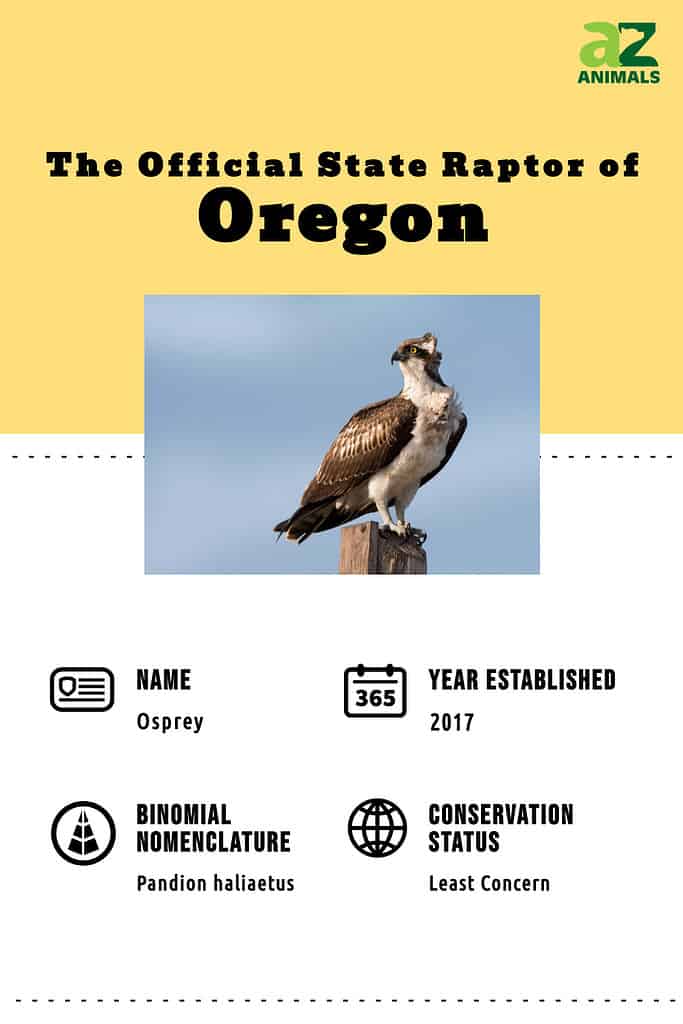
Designated in tandem with the western meadowlark in 2017, after a heated state-wide debate, the osprey is the official state raptor of Oregon.
The osprey is the only living member of its family Pandionidae, and is sometimes classified as a subfamily of the Accipitridae family. The Accipitridae family houses eagles and hawks among other birds.
In Carl Linnaeus’ 10th edition of Systema Naturae, the osprey held the scientific name Falco haliaetus. The name was changed to Pandion haliaetus in 1809 by Marie Jules César Savigny. The genus name comes from the mythic Greek king of Athens, Pandion. The Greek word ‘haliaetus’ means “sea-eagle,” a reference to the bird’s hunting habits.
Osprey Identification
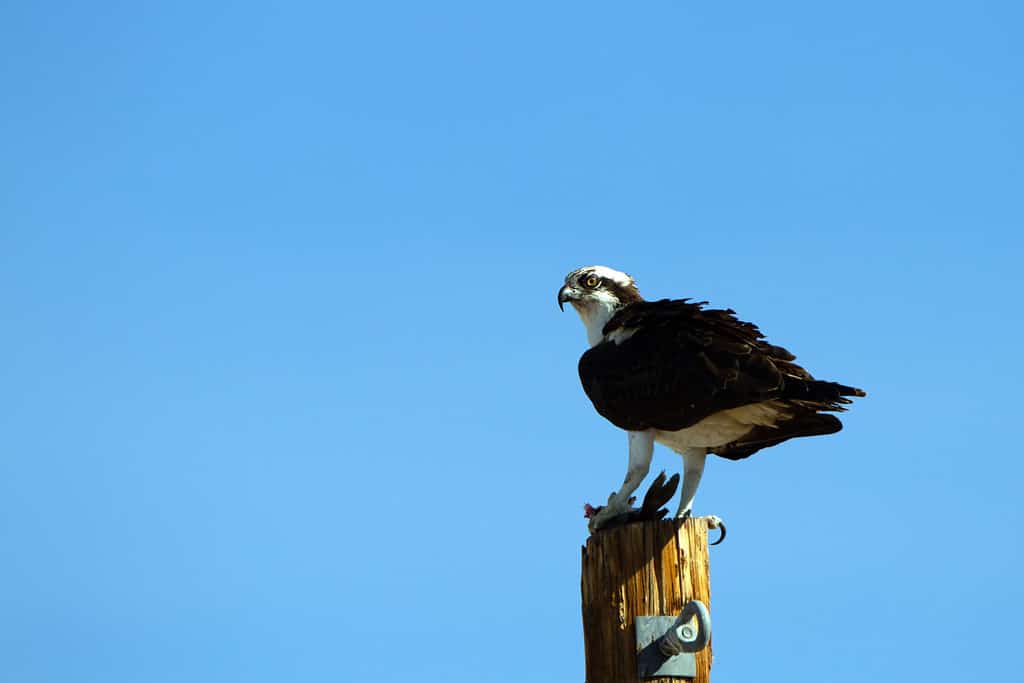
There are four osprey subspecies.
©Martha Marks/Shutterstock.com
The scientific classification for the osprey is as follows:
- Kingdom: Animalia
- Phylum: Chordata
- Class: Aves
- Order: Accipitriformes
- Family: Pandionidae
- Genus: Pandion
- Scientific Name: Pandion haliaetus
There are four subspecies of osprey:
- Pandion haliaetus
- P. haliaetus carolinensis
- P. haliaetus ridgwayi
- P. haliaetus cristatus
Each adult subspecies of osprey is a similar size, large, and has striking white and brown feather patterns. They also have short hooked beaks, rounded tails, and sleek bodies. Immature adults are distinguished by their buffy-tipped dark feathers and fine white spots on their upper wings and back.
Ospreys will glide across the height at high altitudes, usually scoping the waters for food. They will stiffly pump their wings to gain altitude and then dive once they’ve spotted fish. Three of the four subspecies, excluding the P. haliaetus ridgwayi, are highly migratory and fly great distances around their respective territories.
What Do Ospreys Eat?
The osprey almost exclusively eats live fish. The birds will eat both salt and freshwater fish, depending on the time of year and subspecies. When food supplies are scarce, ospreys expand their diet to include other birds, fish carcasses, muskrats, salamanders and lizards, snakes, and squirrels.
Ospreys can detect fish from anywhere between 30 and 130 feet up in the air. They can dive up to 3 feet under the surface of the water, sometimes submerging completely to catch the fish. Also, the birds get the majority of their needed water from their diet. They have been spotted drinking from freshwater sources in heat waves.
Mating Behaviors
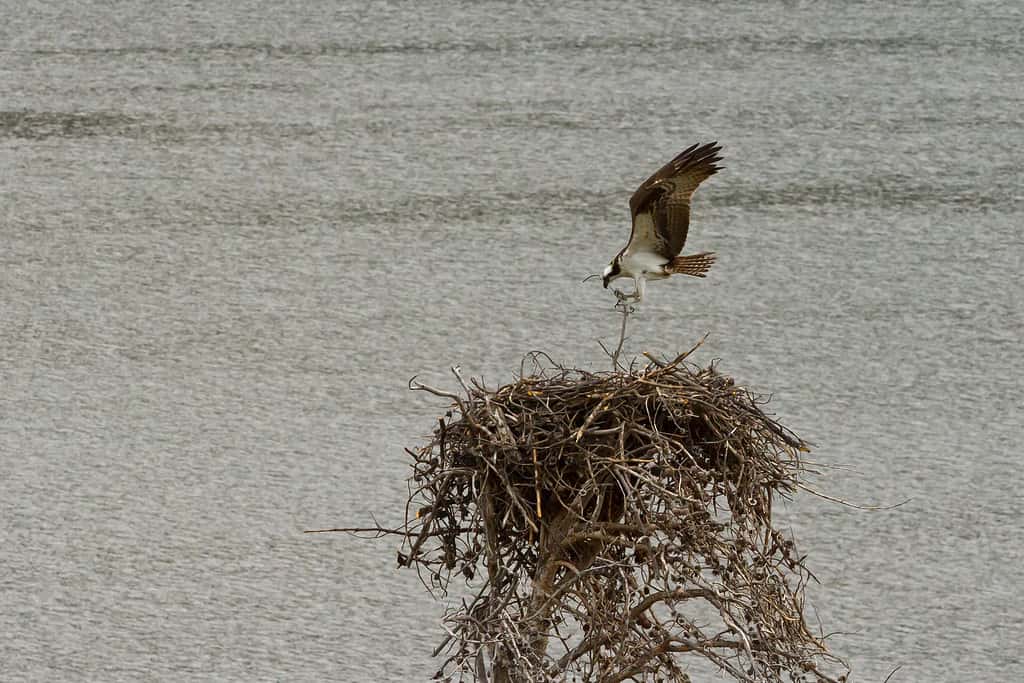
Ospreys nest comfortably near humans.
©Robert O Hull/Shutterstock.com
Ospreys choose one mate and form a lifelong bond. When mating, the pair will usually fly in circles high in the air. The nest site, usually near freshwater lakes and rivers, is chosen by the inseminating bird. The osprey will generally choose a high-up location, either a tree or a utility pole. Sometimes, they will nest on the ground on small islands or cliffsides.
The two birds will build the nest together out of sticks and other bulky materials. They will add to the same series of nests year after year. Nests can become up to 6 feet in diameter with enough years of work.
Birthing birds will lay one brood a year, which consists of between one and four eggs. Eggs are cream- or cinnamon-colored with reddish-brown spots. Both parents are present during the incubation period, about 38 days, with the inseminating bird hunting and the birthing bird guarding the nest.
Chicks hatch one at a time, and those who hatch first are usually more dominant. They are capable of motion from hatching, have open eyes, and are covered in down. Hatchlings will practice flight starting at three weeks and are generally prepared to feed themselves at six weeks.
Ospreys live side-by-side with humans, nesting comfortably near busy roads, on human-made platforms, and in port cities.
How Common Are Ospreys?
Ospreys are one of the only avian species found on every continent except Antarctica. They have seen a steady increase in population at 1.9% between 1966 and 2019, according to the North American Breeding Bird Survey.
Between the 1950s and 1970s, pesticide use in the United States poisoned adult birds and thinned the shells of their eggs. Ospreys saw a 90% drop in breeding pairs along the east coast. In 1972, DDT insecticides were banned in the states, which helped the bird populations rebound.
Today, population levels are generally stable, though tree removal and shoreline development negatively affect breeding pairs. With rising sea levels, the hunting success rate of the osprey could drop significantly.
Where to Find the Bird in Oregon

In Oregon, ospreys are most visible during breeding season between January and May.
©Wang LiQiang/Shutterstock.com
Ospreys can be found in Oregon during the breeding season, from January to May, mostly along the coast. They can also be found along the Columbia and Willamette rivers. Keep your eyes peeling for ospreys around shallow, fish-filled bodies of water. Sometimes they will even build nests near fish hatcheries around the state.
Where Else Does the Osprey Live?
Ospreys live all around the world and migrate frequently within their territories. In North America, they are seen in every state, whether they are migrating through or nesting. They are seen down south in Mexico and up north in Canada.
Thank you for reading! Have some feedback for us? Contact the AZ Animals editorial team.

